engineer
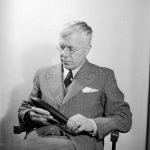
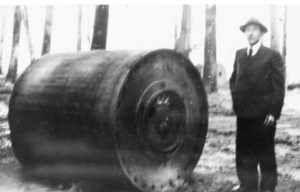 We have all tried our hand at skipping stones across the water, but who would have thought that such an idea could be applied to a bomb, or that it would ultimately become extremely successful in accomplishing its given task…destroying German dams and hydroelectric plants along the Ruhr valley.
We have all tried our hand at skipping stones across the water, but who would have thought that such an idea could be applied to a bomb, or that it would ultimately become extremely successful in accomplishing its given task…destroying German dams and hydroelectric plants along the Ruhr valley.
During World War II, the Allies we’re desperate to cut off energy to the Nazi war machine, so the Allied engineers were given the task of finding a way to breach the defenses surrounding the dams and hydroelectric plants. In the end, it was British engineer, Barnes Wallis who came through with what he called “bouncing bombs.” To watch it in action, one is reminded of skipping stones like most of us have done in the past. In similar fashion, the bomb skips along the water bouncing over the torpedo nets to hit its target.
When World War II began, Germany had the undisputed upper hand when it came to water-based warfare with 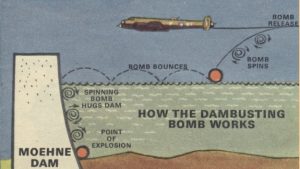
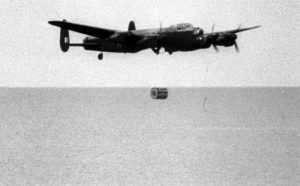 their deadly U-boats and defensive “torpedo nets” placed strategically in front of their energy-creating dams. This made it next to impossible to hit the dams with the traditional torpedo. The British Royal Air Force was determined to take out these German battlements, as they slowly wore the Axis of Evil down.
their deadly U-boats and defensive “torpedo nets” placed strategically in front of their energy-creating dams. This made it next to impossible to hit the dams with the traditional torpedo. The British Royal Air Force was determined to take out these German battlements, as they slowly wore the Axis of Evil down.
The problem was, how to somehow get past the torpedo nets, to destroy the dams and their hydroelectric plants. Wallis had to figure out how to bypass the torpedo nets, in order to make direct contact with the wall of the dams. It seemed like an insurmountable task. After dwelling on the problem for a while, Wallis seized on 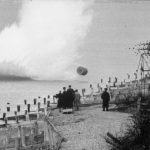
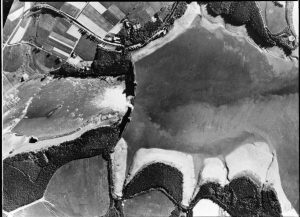 the potential of the Magnus effect, which would bounce a bomb across the water like a skipping stone.
the potential of the Magnus effect, which would bounce a bomb across the water like a skipping stone.
The theory was to create backspin, which would counter the gravity and send the bomb skimming over the water. Once it bounced over the torpedo net, it hit the designated target. The plan seemed plausible, and the Royal Air Force commenced Operation Chastise on May 16, 1943. The results were spectacular!! As it turned out, Barnes Wallis really knew his stuff.
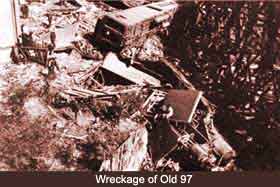 People always seem to be in a hurry. We encounter cars that fly past us trying to get to their destination on time, when they really didn’t allow enough time for the trip. We are all guilty of running late, and even of speeding to make it on time, and as we all know, sometimes our habit of running late and being in such a hurry, can have bad consequences. Sometimes the consequences of running late can be devastating. Such was the case with Old 97, a mail train for Southern Railways. While it’s number was simply number 97, and it was officially known as the Fast Mail, its nickname was Old 97. The train ran from Washington DC to Atlanta, Georgia. On September 27, 1903 it was en route from Monroe, Virginia, to Spencer, North Carolina when disaster struck…or rather was forced upon the ill fated train.
People always seem to be in a hurry. We encounter cars that fly past us trying to get to their destination on time, when they really didn’t allow enough time for the trip. We are all guilty of running late, and even of speeding to make it on time, and as we all know, sometimes our habit of running late and being in such a hurry, can have bad consequences. Sometimes the consequences of running late can be devastating. Such was the case with Old 97, a mail train for Southern Railways. While it’s number was simply number 97, and it was officially known as the Fast Mail, its nickname was Old 97. The train ran from Washington DC to Atlanta, Georgia. On September 27, 1903 it was en route from Monroe, Virginia, to Spencer, North Carolina when disaster struck…or rather was forced upon the ill fated train.
When the train arrived in Monroe, it switched train crews and when it left Monroe there were 17 people on board. The train personnel included Joseph A Broady who was the engineer, nicknamed “Steve” by his friends, John Blair was the conductor, A C Clapp was the fireman, John Hodge was a student fireman, and James Robert Moody was the flagman. Also aboard were mail clerks, including J L Thompson, Scott Chambers, Daniel Flory, Paul Argenbright, Lewis Spies, Frank Brooks, Percival Indermauer, Charles Reames, Jennings Dunlap, Napoleon Maupin, J H Thompson, and W R Pinckney, who was an express messenger.
As they left Monroe, Old 97’s engineer, 33 year old Broady found himself running late, and in a hurry to get the train back on schedule. When the train pulled into Lynchburg, VA, Wentworth Armistead, who was a safe locker boarded the train so at that time there were 18 men aboard. The train consisted of four cars, and Broady was operating the train at high speed in order to stay on schedule and arrive at Spencer on time. You see, Fast Mail had a reputation for never being late…and a contract that included a fine if they were. Old 97 was behind schedule when it left Washington, DC and was one hour late when it arrived in Monroe, Virginia. All that was unacceptable, but Southern Railways and Engineer Broady were about to discover two things. The first is that 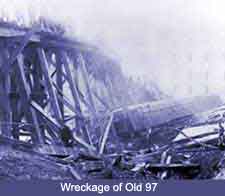 it is always best to stay on schedule, when a schedule is an important part of your job. The second is that there are far worse things than being late.
it is always best to stay on schedule, when a schedule is an important part of your job. The second is that there are far worse things than being late.
By the time Old 97 reached the Stillhouse Trestle near Danville, Virginia, Broady realized, with a horrible sense of dread and impending doom, that he did not have enough air pressure to slow the train for Stillhouse’s upcoming curved trestle. He tried, in vain to slow the train down by reversing the engine to lock the wheels, but Old 97 vaulted off the trestle, and 11 people were killed. Nine men of the eleven who died, were killed instantly. Seven men were injured. Among the deceased were the engineer Broady, conductor Blair, and flagman Moody. The bodies of both firemen were recovered, but they were mangled so badly they were unrecognizable. There were several survivors to the wreck who believed they survived because they jumped from the train just before the fatal plunge. Among the three survivors was an individual named J Harris Thompson of Lexington. Harris was a mail-clerk who served on the Southern Railroad. He later retired on May 1, 1941. W R Pinckney, the express messenger who also survived went home, located in Charlotte, North Carolina, and immediately resigned after the experience. Two other survivors included Jennings J Dunlap, and M C Maupin. These two men did not resign and continued their work, but started in new departments. Dunlap went to work on a train that ran between Washington and Charlotte, while Maupin worked at the Charlotte union station. The horrible pictures of the aftermath of the crash taken from above the scene ran in newspapers across the country.
At Monroe, Broady was instructed to get the Fast Mail to Spencer, 166 miles away…on time. The scheduled running time from Monroe to Spencer was four hours and fifteen minutes at an average speed of approximately 39 miles per hour. In order to make up the one hour delay, the train’s average speed would have to be at least 51 miles per hour. Broady was ordered to maintain speed through Franklin Junction, an intermediate stop normally made during the run. This was a time when train wrecks were not uncommon, but the day after the wreck, Southern Railway’s Vice President stated that “The train consisted of two postal cars, one express and one baggage car for the storage of mail… Eyewitnesses said the train was approaching the trestle at speeds of 30 to 35 miles an hour.” The Southern Railway placed blame for the wreck on engineer Broady, denying that he 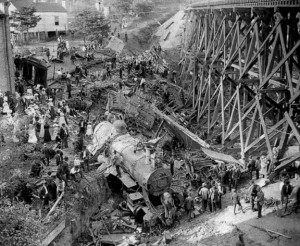 had been ordered to run as fast as possible to maintain the schedule. The railroad also claimed he descended the grade leading to Stillhouse Trestle at a speed of more than 70 miles per hour. Several eyewitnesses to the wreck, however, stated that the speed was probably around 50 miles per hour. In all likelihood, the railroad was at least partially to blame, as they had a lucrative contract with the US Post Office to haul mail…a contract that did include a penalty clause for each minute the train was late into Spencer. It is probably safe to conclude that the engineers piloting the Fast Mail were always under pressure to stay on time so the railroad would not be penalized for late mail delivery. And being under pressure can be deadly.
had been ordered to run as fast as possible to maintain the schedule. The railroad also claimed he descended the grade leading to Stillhouse Trestle at a speed of more than 70 miles per hour. Several eyewitnesses to the wreck, however, stated that the speed was probably around 50 miles per hour. In all likelihood, the railroad was at least partially to blame, as they had a lucrative contract with the US Post Office to haul mail…a contract that did include a penalty clause for each minute the train was late into Spencer. It is probably safe to conclude that the engineers piloting the Fast Mail were always under pressure to stay on time so the railroad would not be penalized for late mail delivery. And being under pressure can be deadly.

 In 1980, my parents and younger sisters took a trip to California. It was a trip that would take them to the famous Golden Gate Bridge, as well as, drives along the Pacific Ocean, and relaxing time spent on the beach. It was the first of a number of trips my parents would take to California. They really loved that area. I would not get to see California until the late 1990s. I’m not sure what took me so long really.
In 1980, my parents and younger sisters took a trip to California. It was a trip that would take them to the famous Golden Gate Bridge, as well as, drives along the Pacific Ocean, and relaxing time spent on the beach. It was the first of a number of trips my parents would take to California. They really loved that area. I would not get to see California until the late 1990s. I’m not sure what took me so long really.
Today is a rather significant day in the history of San Francisco, and one that in reality makes any trip to California worth taking. It was on this day January 5, 1933 that work began on the rather controversial Golden Gate Bridge. I’m sure that most people would not think of the bridge as being controversial, but there were a lot of people who were against it because they thought it would ruin the beautiful view of the San Francisco Bay. I guess I can understand that to a degree, because I am someone who really doesn’t like change much, but when you look at the finished product, I would have to agree with most people when I say that I think this one was a good change. The bridge is a beautiful addition to the bay. I especially like its red color, which I suppose might seem a bit unusual for a bridge. Nevertheless, it does make this bridge stand out.
Still, why was the bridge necessary? When you look at the whole area, you find that you could have driven around the area. Nevertheless, I’m sure that back then, driving around would take too long. The idea was that if the land north of the bay was easier to access, it’s value would increase. It made sense, but while the idea was first presented in 1869, it was pretty much tabled until it was revisited in 1916, when a former engineering student named James Wilkins, who was working for the San Francisco Bulletin brought it up again. He proposed a suspension bridge with a center span of 3,000 feet which was nearly twice as long as any bridge in existence at the time. The expected cost was $100 million, but when the city engineer, Michael O’Shaughnessy, who is also credited for naming the Golden Gate Bridge began to ask around, he found Joseph Strauss, a 5 foot tall Cincinnati born Chicagoan who said he could do it for less. In fact, for $25 – 30 million, Strauss said he could build one with a 4,000 foot span.
The idea was well received, but the Great Depression would stall the construction until 1933 when bonds could be sold to make it happen. The bridge would take four years to complete, and so it first opened on May 27, 1937, as the longest bridge span in the world 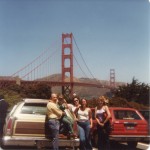
 at that time. The first public crossing had taken place the day before, when 200,000 people walked, ran, and even roller skated across the bridge. It’s red paint job and its famous towers have made the Golden Gate Bridge an American landmark and popular tourist attraction ever since, and one that I am glad I got to see. While San Francisco’s temperatures don’t always appeal to me, the summers of which are not always warm, I do nevertheless, love visiting there. Like my parents, I find the California coast to be a pleasant change from the mountains of Wyoming.
at that time. The first public crossing had taken place the day before, when 200,000 people walked, ran, and even roller skated across the bridge. It’s red paint job and its famous towers have made the Golden Gate Bridge an American landmark and popular tourist attraction ever since, and one that I am glad I got to see. While San Francisco’s temperatures don’t always appeal to me, the summers of which are not always warm, I do nevertheless, love visiting there. Like my parents, I find the California coast to be a pleasant change from the mountains of Wyoming.
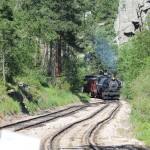 I read an article in the Casper Star Tribune yesterday that made me think about the many changes in the railroad over the years. When my grandfather, Allen Luther Spencer was working on the railroad as a carpenter during World War II, and for years before that, it took a number of people to run a train. The freight trains during World War II typically had seven people aboard…an engineer, conductor, up to four brakemen and a fireman. With all the trains that were running…not nearly as many as we have today…the railroad supplied a lot of jobs. This was just to run the actual train. The maintenance personnel, the station managers, and others who were required to keep the trains running smoothly, added to the number of people it took to ultimately move the trains along the tracks at any given moment. The trains of that era weren’t anywhere near as long as they are these days either.
I read an article in the Casper Star Tribune yesterday that made me think about the many changes in the railroad over the years. When my grandfather, Allen Luther Spencer was working on the railroad as a carpenter during World War II, and for years before that, it took a number of people to run a train. The freight trains during World War II typically had seven people aboard…an engineer, conductor, up to four brakemen and a fireman. With all the trains that were running…not nearly as many as we have today…the railroad supplied a lot of jobs. This was just to run the actual train. The maintenance personnel, the station managers, and others who were required to keep the trains running smoothly, added to the number of people it took to ultimately move the trains along the tracks at any given moment. The trains of that era weren’t anywhere near as long as they are these days either.
As technology became more sophisticated, fewer people were needed to run a train, and by the 1970s, the number of people on a freight train had dropped to five people, and by 1991, only the engineer and the 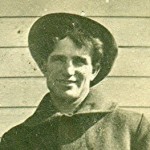 conductor were needed to run the train. When you consider that the trains have become so long that it can take twenty minutes to get the whole train through a crossing, that seems amazing to me. I guess it is amazing to a lot of other people too, because as the railroads are trying to eliminate one of those positions as well, a lot of people are quite worried about the safety of the trains. What strikes me as funny, however, is that the concern is that if they need to disconnect a car so emergency vehicles can get through, the engineer can’t leave his post to do so. I’m sure that in the future that part will be handled too, because technology is getting to the point whereby the train really could be run without a driver, just like the model trains are.
conductor were needed to run the train. When you consider that the trains have become so long that it can take twenty minutes to get the whole train through a crossing, that seems amazing to me. I guess it is amazing to a lot of other people too, because as the railroads are trying to eliminate one of those positions as well, a lot of people are quite worried about the safety of the trains. What strikes me as funny, however, is that the concern is that if they need to disconnect a car so emergency vehicles can get through, the engineer can’t leave his post to do so. I’m sure that in the future that part will be handled too, because technology is getting to the point whereby the train really could be run without a driver, just like the model trains are.
Much like the model trains, there is a controller at a central location who can see all the trains for his area. In reality, they probably could control the train with no one on it, but how strange that would be…especially when talking about passenger trains. But then, with subways, and airport trains, we often get on the train, and never see if anyone is running it. In airports, the voice telling you of your arrival is even 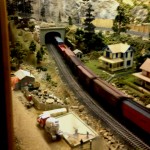 mechanical. I have to wonder if anyone is running those, and maybe someone out there will clarify that one for me. Someday, or even already, we will probably ride trains and never give a second thought to the fact that there is no engineer. Everything has become so technical, and we have reached a point of being so used to robotics, that we don’t even give a second thought to the aspect of someone being in control of this massive train we have just boarded…and people have said that flying is like being in a cattle truck. Turning control of our lives to someone we don’t know, or even to a robot, seems very strange, even today, but what would the people of my grandfather’s era have thought about having no one to run the train. I’m quite sure they would never have boarded at all.
mechanical. I have to wonder if anyone is running those, and maybe someone out there will clarify that one for me. Someday, or even already, we will probably ride trains and never give a second thought to the fact that there is no engineer. Everything has become so technical, and we have reached a point of being so used to robotics, that we don’t even give a second thought to the aspect of someone being in control of this massive train we have just boarded…and people have said that flying is like being in a cattle truck. Turning control of our lives to someone we don’t know, or even to a robot, seems very strange, even today, but what would the people of my grandfather’s era have thought about having no one to run the train. I’m quite sure they would never have boarded at all.

